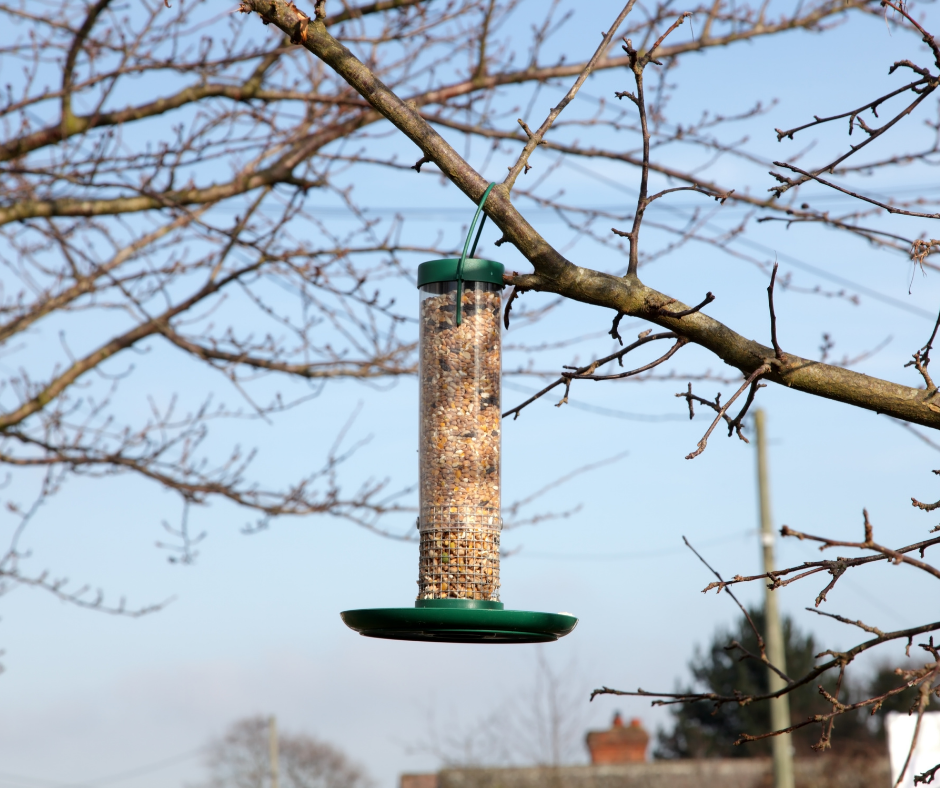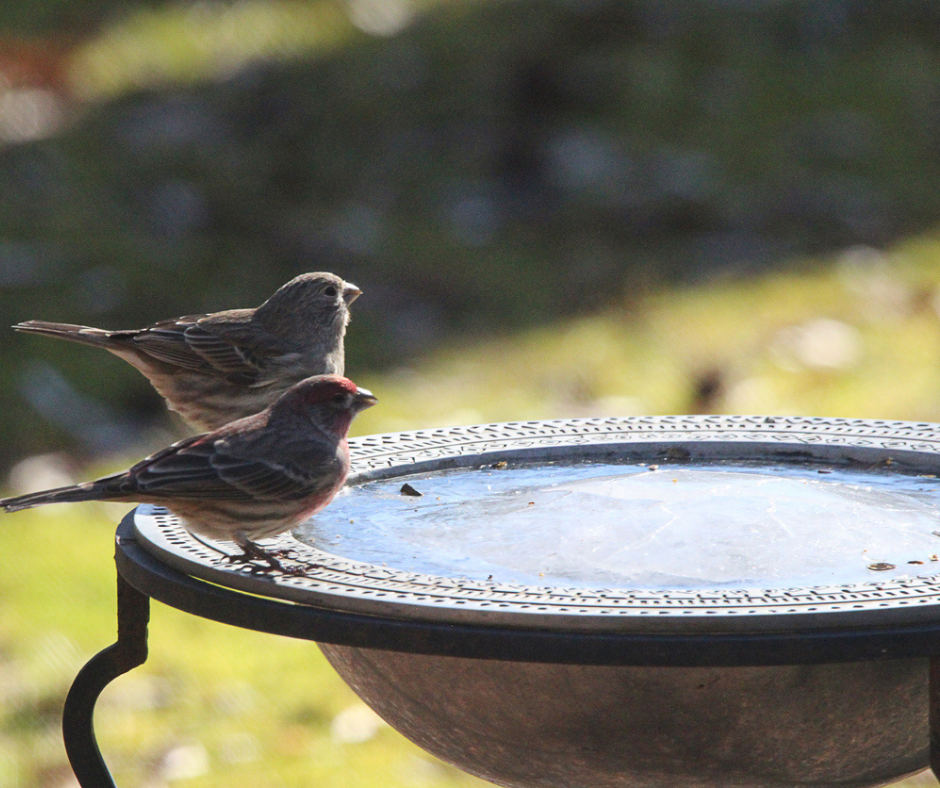When it comes to the wild birds in our gardens, many of us are keen to lend these creatures a helping hand where we can by providing them with food, water and shelter. But now that winter is well under way, our feathered friends can really benefit from our support during the colder and darker months. This is also a great way to encourage these animals to make a home for themselves in our gardens, seeking sanctuary and shelter from the winter chills!
Read on to find our five top tips for looking after wild birds this winter. 🐦
- Provide a regular source of high energy food
As you can imagine, finding a steady food supply throughout winter can be somewhat challenging for wild birds. Because of this, supplying then with high-energy food can make their lives so much easier!
It can be a little tricky to select a good quality wild bird food, as there are lots of different feed mixes available, leading many of us to feel unsure about what to feed birds in winter. However, the better mixes tend to contain lots of sunflower seeds, maize flakes and peanut granules.
Bird feeds containing sunflower kernels and nuts are a good option for winter feeding, as they often contain lots of fats and proteins to provide energy and extra warmth. This is especially useful in winter, as body reserves are used up extremely quickly. But always avoid feeding whole nuts or nut chunks in the spring and summer months, as these can be a choking hazard if eaten by chicks. And never add salted or roasted nuts to feed, as these can be high in a natural toxin that can kill birds. Brown or white rice (with no added salt) can also be very beneficial to many wild bird species during severe winter weather as, again, this can be a good source of energy.
Additionally, fat balls and fat-based bird feed bars are great for the colder months but, if they are sold in a nylon mesh bag, always make sure you remove this to prevent birds getting tangled or trapped! It’s possible to make your own fat balls or bars, although you should always ensure the salt content of the fat you select is low. Only use hard, pure fats such as lard and raw suet, as these will re-solidify after melting, meaning they are less likely to smear on feathers and affect their waterproof and insulating qualities. Hard fats also have the additional benefit of being less likely to act as a breeding ground for bacteria.
For more advice on what to feed wild birds all-year-round, check out our article “What can birds eat”.

- Consider your bird feeder type and location
When it comes to selecting your bird feeder, there are a number of different features you can consider. For example, a tray beneath the feeder can help to prevent feed from scattering and attracting rats, and weight activated partitions can act to cover feeding holes if larger animals, such as squirrels, pay your feeder a visit!
Filling lots of small wild bird feeders with different types of food, and positioning these in different areas around your garden, will enable you to provide food for lots of different bird species. And try to avoid placing feeders near fences and other boundaries, as birds may feel threatened by predators when in these areas, as visibility will be reduced. It’s best to position your feeders in a clear area that still has plenty of foliage to allow birds to “queue” while the feeder is in use and feel protected when feeding.
- Always provide clean water
Water can be difficult for birds to source as temperatures drop, because many water supplies can freeze over. However, water for wild birds in winter is essential as most species will need to drink at least twice a day. Regular access to water for bathing is also important for feather maintenance as dampening feathers helps to removes dirt and makes it easier for birds to preen themselves. Preening is where birds will carefully rearrange their feathers, spreading oil from their preening gland, so they will remain waterproof. This process will also trap an insulating layer of air under the feathers which helps birds to keep warm.
Bird baths are a great way to provide water for wild birds to drink and bathe– but you may be wondering how you can stop these from freezing over? This can be tricky, but some of the ways you can try to prevent freezing are by:

- Regularly pouring warm water into the bath to melt the ice.
- Lining the bath with a polythene sheet, so you’re able to easily remove any ice.
- Considering a high-tech bird bath that uses solar power to prevent water from freezing over.
If you aren’t around to keep an eye on your bird bath, you can try floating a light ball in the water as this will move around with the breeze, preventing a small area of water from freezing over. This will mean there should always be a small unfrozen area where birds can access water. Never use chemicals or salt to prevent your bird bath water from freezing, as these can be poisonous and may also stop bird’s feathers from being waterproof.
- Give them shelter
When caring for wild birds in winter, providing them with shelter is essential. Many birds like to seek sanctuary in mature ivy, especially when it’s growing up against the wall of a house, as this will mean additional warmth and shelter.
Alternatively, species such as tits and wrens will roost in nesting boxes. When selecting a nesting box for your garden, consider boxes that have good insulation properties but also allow for adequate ventilation. Plain boxes are a good idea, as predators are often able to cling to decorations on the outside of boxes, threatening the birds inside.
Although the majority of wild birds will breed in the spring, some pigeon and dove species breed all year round. So birds like woodpigeons and collared doves will benefit from bird boxes over winter.
- Keep it clean
When selecting a bird feeder, consider whether it will be simple to clean. Make sure you empty leftover food daily, as this can attract unwelcome visitors such as rats, and helps to prevent food from going mouldy. You can clean your bird feeders using a weak bleach or a commercial cleaner that’s safe for birds and allow the feeder to air-dry properly before refilling.
Nesting boxes and bird baths should be cleaned and emptied to prevent build-up of old bedding material, bath water, bacteria and algae. You can also use weak bleach to clean your bird bath and a diluted household disinfectant for nesting boxes. Alternatively, a commercial “bird-safe” cleaner is safe to use for either.
If you would like more advice on how to clean your bird bath, check out our “How to clean a bird bath and keep your feathered friends happy” article.
That concludes our five top tips for keeping wild birds safe, warm and well fed this winter! And, if you would like more information on caring for wild or pet birds, head over to the bird advice section on our website.


